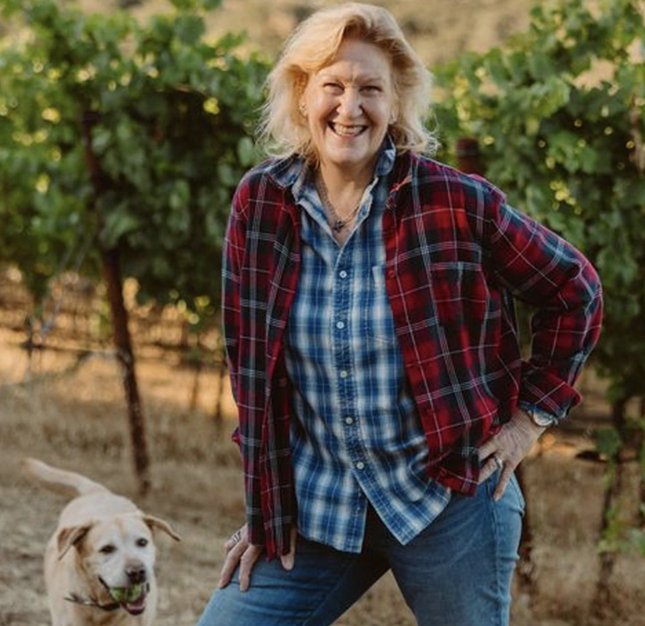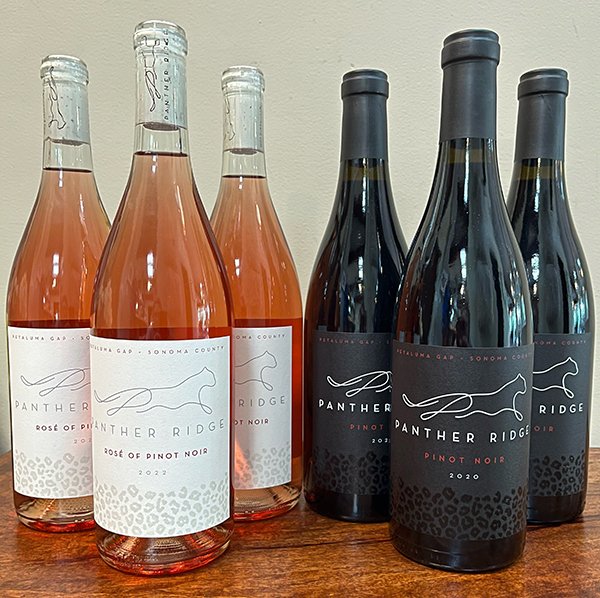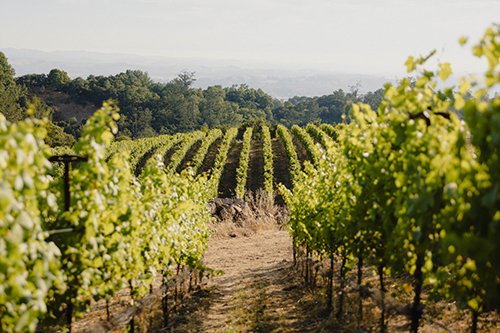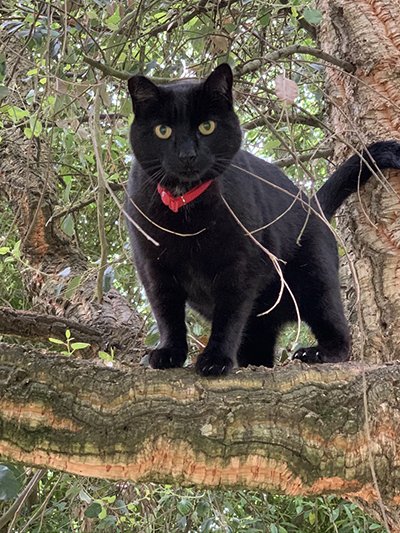Panther Ridge Vineyards
Get the Dirt from owner Suzanne Farver
“We strive for a subtle sophisticated Pinot in the style of a French Burgundy. I work closely with my winemakers on the final blends to produce a wine that is unique and complex and truly reflects my vineyard. ”
What was your first vintage year? My first vintage was 2019 Pinot Noir, and we received two 95 scores – one from the Somm Journal and one from Michal Hudin, who wrote a nice article about the Petaluma Gap and tasted 35 wines from the Gap and liked Panther Ridge the best.
How many cases do you make per vintage? Our first vintage in 2019 was just 45 cases of Pinot Noir and we’re sold out. Going forward, we are aiming for about 150 cases of Pinot Noir and 100 cases of Rosé, so about 250 cases/year.
Do you have a Tasting Room? No, but I do take appointments for tastings at my home on an informal basis.
Who is your winemaker? Adrian Manspeaker at Joseph Jewell Wines makes my Pinot Noir. He also bottles his own Pinot Noir with Panther Ridge on the label. Garry Brooks at Brooks Note Winery makes my Rosé of Pinot Noir. Brooks Note also makes a Panther Ridge Pinot Noir. Garry told me his 2021 Panther Ridge Pinot Noir is the best wine he’s ever made. That makes me smile.
What wine made you want to become a winemaker/start your own winery?
I’ve always been enamored with Pinot Noir. My dad used to collect French Burgundies, and I have followed that pathway through my life! I had two retail wine stores in the 80s in Denver and collected wine from the 90s to 2000s. Then I moved to California and planted my own vineyard in 2016. I was thrilled to find a spot on Sonoma Mountain where it was ideal to grow Pinot Noir.
What varietals do you work with?
Just Pinot Noir – it’s the best varietal for our site, and it’s also my fave. We strive for a subtle sophisticated Pinot in the style of a French Burgundy. The Rosé is full bodied and full flavored. It is an intentional Rosé – we dedicate a specific block and pick at the right brix for best results.
What vineyards do you source from?
My wine is made from my own vineyard, which is 7 acres located in the Petaluma Gap, 1,000 feet up on Sonoma Mountain. I found the location in 2012 – it is an amazing site facing west toward Cotati, located about a mile from the famed Gap’s Crown vineyard and has very similar soils – Goulding-Toomes with varied volcanic and basalt granite gravel and rock. I planted the vineyard myself in 2016. We were certified organic in 2019 and I’ve also been farming with biodynamic practices. I sell 75% of my grapes to other wineries, including Joseph Jewell, Brooks Note and Lynmar Estate. I keep 25% of the grapes for my own label, Panther Ridge.
What type of oak treatment do you use?
We age the wine in 20% to 50% new French oak for 16-17 months. We use barrels from François Frères, DAMI and Richelieu. These barrels were recommended by a wonderful consultant from Burgundy that I can’t afford anymore, but he helped to get me started with the right oaks and the right farming practices. My wine responds beautifully to oak, and moving forward I aim to use 50% new French oak from these cooperages.
What do you love about your winemaking region? What makes it different special?
The cooler temperatures of the Petaluma Gap are perfect for Pinot Noir. Our elevated site is usually about 10 degrees cooler than the valley on summer days, and also warmer at night so we rarely have a frost problem. The cooling breezes from the Gap allow for longer hang time and more complex flavors in the wine.
What’s the story behind your winery name / label?
We have a long history of domesticated black cats in my family. That coupled with mountain lions seen on site meld beautifully for the name Panther Ridge. My label image reflects the elegant panther figure as well as the spots/rocks at the bottom of the label.
What's the one thing you wish someone had told you about the wine business before you started your own winery?
I am not sure if it would have stopped me, but it is hard to make yourself known as a brand for a small winery. There are a ton of us, and distinguishing yourself is a challenge. Even though my grapes are certified organic and I’m farming biodynamically and my wine gets great reviews, there are just a ton of other wines out there. But I am stubborn, and I will prevail.
Most importantly, what's so great about being small? What can you do as a small winemaker, that wouldn't be possible for larger wineries?
I work closely with my winemakers on the final blends to produce a wine that is unique and complex and truly reflects my vineyard. Being small also allows for personal attention to my customers. I know almost everyone on my mailing list, and I write them a thank you note when they buy wine from me. I love that my customers are happy about my wine. My rosé customers are especially fanatic.
How do you view the future in the wine industry for small-lot winemakers?
It’s tough. Especially for me without a tasting room. So events like Garagiste are really important for me. I do well getting contacts from events like this. The Petaluma Gap annual event is also good for me. Folks at events like that come looking to learn about small wineries. That’s just great. I love watching folks’ expressions when they taste my wine and realize it’s just delicious.
If you could choose another wine region to work in what would it be?
Hmmm, probably Willamette Valley. If I’m not drinking Petaluma Gap or Alexander Valley Pinot, I’m drinking Willamette Valley Pinot!
For more information about Panther Ridge, please visit their website or follow them on Instagram.




